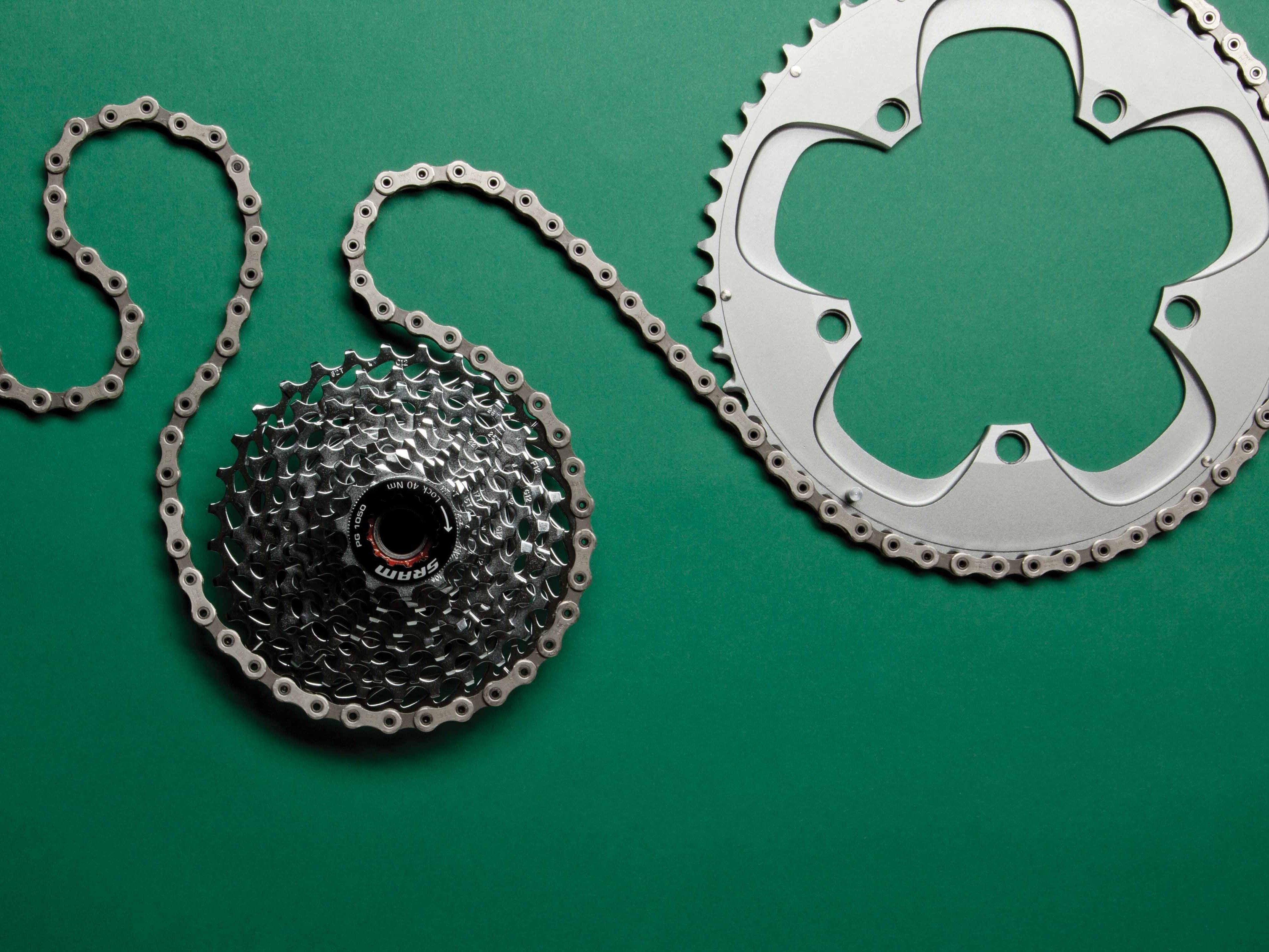Triathlon Tech: Minimize Drivetrain Friction

Photo: John David Becker
Save watts by replacing the right drivetrain part at the right time.
This article was originally published in the July/August 2013 issue of Inside Triathlon magazine.
Although it is only a fraction as important as aero drag and rolling resistance, drivetrain friction can have a real impact on speed. There is a wealth of information about the best ways to save wind drag, but much less is known about the most effective way to minimize drivetrain friction, or if addressing it is even worth the cost. The researchers at Friction Facts (Friction-facts.com), an independent testing lab based in Boulder, Colo., tested old and new chains, chainrings and cassettes to find the best way to reduce drivetrain friction without breaking the bank. Here’s what they learned.
RELATED: Your Bike Maintenance Schedule
The Test:
Friction Facts tested 12 total 10-speed Shimano Ultegra and Dura-Ace chains (10 worn to different degrees plus two new)on both a new and used Shimano chainring and cassette.
– Every used chain was measured to determine its elongation.
– All the chains were ultrasonically cleaned and then re-lubricated in exactly the same way.
– The tests were run at 250 watts and 95 RPM, realistic conditions for a very fit athlete.
– The test apparatus was accurate within +/- 0.02 watts.
– The energy required to spin the chainring, cassette cog and chain was measured for every condition.
RELATED: Your Bike Race-Ready Checklist
Results:
Replace your chain
The Friction Facts testing showed that the power required to spin the drivetrain increases proportionally as the chain wears. The brand-new chain saved almost two watts compared to one at the end of its wear life, equivalent to 0.8 percent of the rider’s total output. This trend continues when a chain is well beyond its recommended wear life. One that was stretched more than twice the distance suggested by chain manufacturers consumed over 3.5 additional watts compared to a fresh chain.
Forget the rest
While friction continued to rise as a chain became more and more worn out, cassette and chainring wear had almost no impact on total drivetrain friction. A brand-new set saved between one-tenth and one-third of a watt, and the difference was essentially unaffected by chain wear. Only replace these parts when shifting performance starts to suffer.
RELATED – Rookie In Training: Bike Maintenance
How to Check your Chain
Mileage estimates for chain replacement vary too much from rider to rider, but tools such as the Park Tool Chain Checker (Parktool.com) can measure the elongation of a chain to give you an accurate answer of when to replace your chain. Manufacturers recommend replacing a 10-speed chain once it stretches by 0.75 percent, but even a chain that has elongated by 0.5 percent will cost you about 1.5 watts on race day. Measure your chain’s wear in the weeks before a race. If you’re trying to squeeze every second out of your next race, consider changing your chain before race day even if it hasn’t quite reached 0.75 percent.